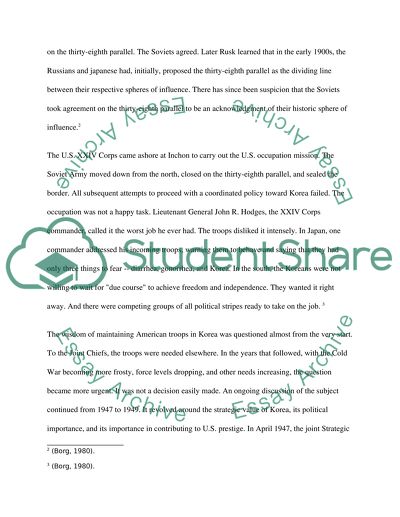Cite this document
(“The Korean War Essay Example | Topics and Well Written Essays - 2500 words”, n.d.)
The Korean War Essay Example | Topics and Well Written Essays - 2500 words. Retrieved from https://studentshare.org/miscellaneous/1529040-why-did-the-korean-war-start
The Korean War Essay Example | Topics and Well Written Essays - 2500 words. Retrieved from https://studentshare.org/miscellaneous/1529040-why-did-the-korean-war-start
(The Korean War Essay Example | Topics and Well Written Essays - 2500 Words)
The Korean War Essay Example | Topics and Well Written Essays - 2500 Words. https://studentshare.org/miscellaneous/1529040-why-did-the-korean-war-start.
The Korean War Essay Example | Topics and Well Written Essays - 2500 Words. https://studentshare.org/miscellaneous/1529040-why-did-the-korean-war-start.
“The Korean War Essay Example | Topics and Well Written Essays - 2500 Words”, n.d. https://studentshare.org/miscellaneous/1529040-why-did-the-korean-war-start.


